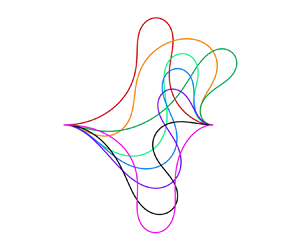Published online by Cambridge University Press: 22 August 2023

The flow-induced snap-through dynamics of a buckled flexible filament was explored using the penalty immersed boundary method. The effects of the filament length, bending rigidity and Reynolds number on the mode transition were systematically examined. Three different modes were observed when the aforementioned parameters were varied: an equilibrium mode, a streamwise oscillation mode and a snap-through oscillation mode. Two mode transitions occurred when the bending rigidity was lowered and the length and Reynolds number were increased: a direct transition from the equilibrium mode to the snap-through oscillation mode and the successive appearance of the three modes. An increase in transverse fluid force induced the snap-through oscillation mode. A vortex-induced vibration and a self-excited vibration occurred in the streamwise oscillation mode and the snap-through oscillation mode, respectively. A wake pattern of 2S appeared in the streamwise oscillation mode, and a pattern of 2S + 2P appeared in the snap-through oscillation mode. A hysteresis was observed near the critical Reynolds number. The hysteresis loop increased in magnitude with increasing bending rigidity. The greater energy harvesting was achieved by the larger deflection and the higher strain energy. We found that most of the strain energy was concentrated in the last half of the filament.